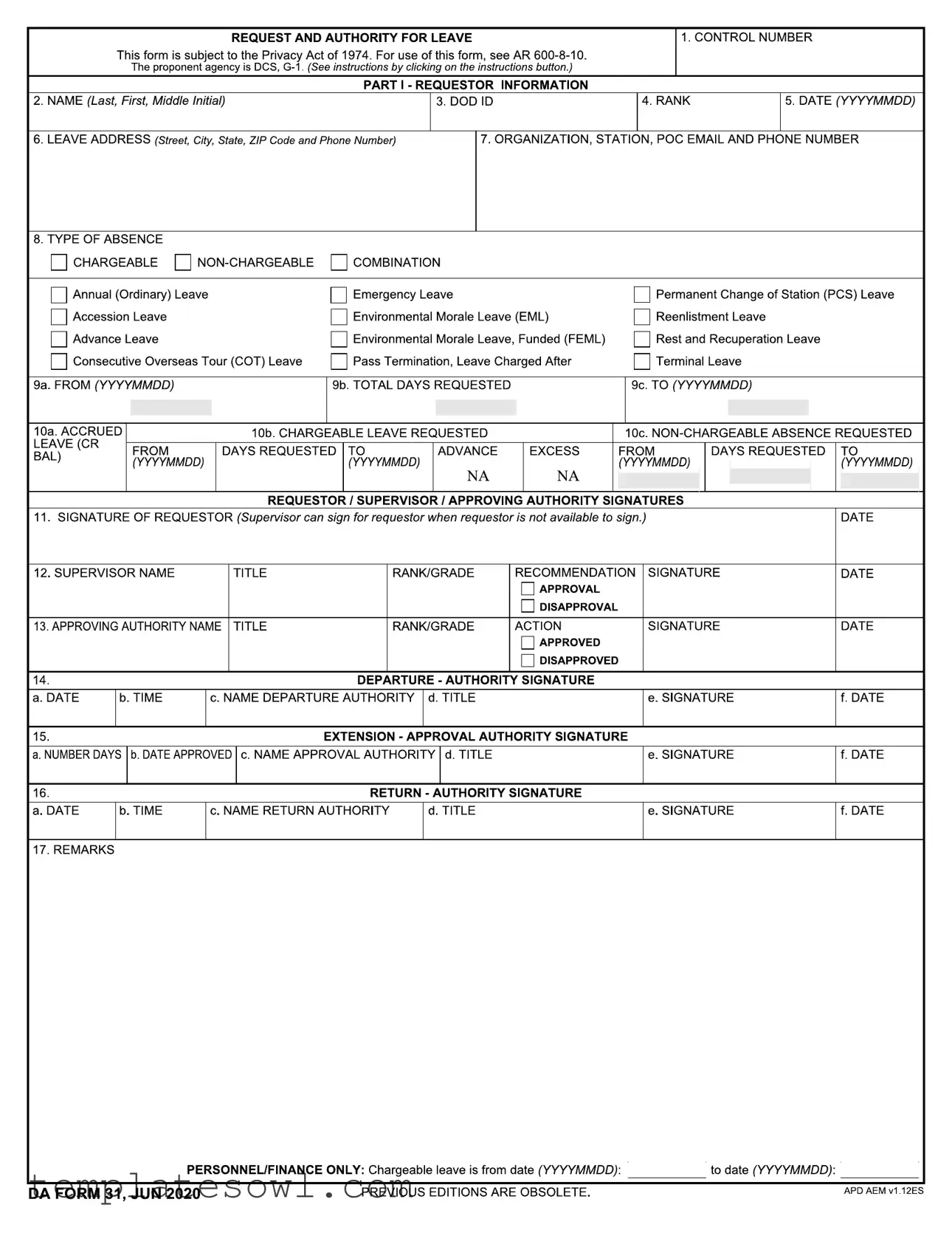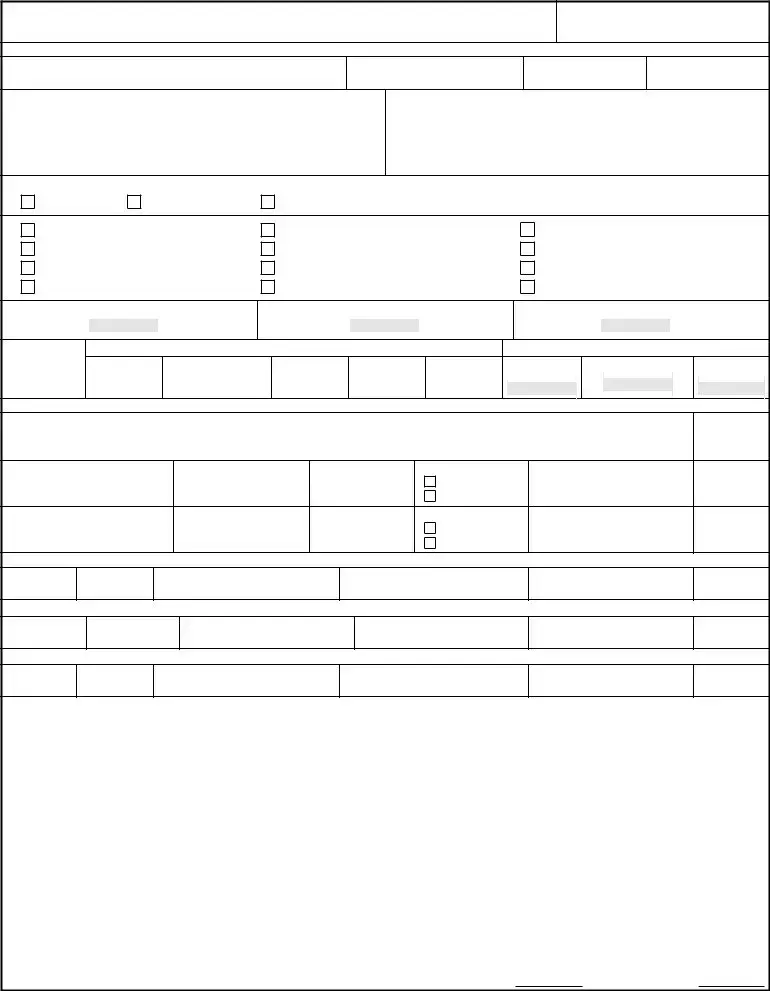When filling out the DA 31 form, several common errors can hinder the approval process for leave requests. One frequent mistake is incomplete or inaccurate personal information. The section requesting the individual's name, DOD ID, and rank must be filled out correctly. Missing or misspelled information can lead to delays, as the approval authorities rely heavily on the accuracy of this information to verify identity and rank.
Another pitfall is failing to specify the type of absence correctly. The form provides various options, such as chargeable or non-chargeable leave, and aims to clarify the reason for the leave. Not ticking the appropriate box may result in confusion or misinterpretation of the intent behind the request, potentially leading to disapproval.
Inadequate details in the leave dates can cause significant complications. The requestor must provide the start and end dates clearly. If the dates are improperly formatted or omitted, as can happen with the required YYYYMMDD format, the request may be returned for correction, extending the waiting period unnecessarily.
Many individuals overlook the importance of the “Leave Address” section. Including a current and accurate leave address is crucial; it allows the approving authority to reach out during the leave period if any urgent matters arise. Failing to provide this information can raise concerns about communication during a service member's absence.
It is also important to consider accrued leave balances. Individuals sometimes do not check their accrued leave before submitting the form. This oversight can lead to requests for more leave than is available, causing potential disapproval. Knowing one’s leave balance ahead of time is essential for a smooth process.
Neglecting to obtain the necessary signatures is another common error. Each signature, from the requestor to the approving authority, signifies that all parties agree to the proposed leave. If the form lacks a required signature, it may be viewed as incomplete or even invalid. Each person involved should ensure their part is completed before moving on.
Those completing the form may also forget to sign and date the request properly. Signatures and dates serve as confirmations of consent and awareness regarding the leave request. Without them, documents may not hold weight during reviews, leading to delays or outright rejections.
Another mistake involves the remarks section. This space is often underused. Leaving it blank can miss the chance to provide valuable context or any unique circumstances related to the leave request. Going beyond mere procedural completion by adding relevant information can facilitate better understanding for the approvers.
Finally, many are unaware of the importance of submission timing. Delaying the completion and submission of the DA 31 can lead to complications, especially in cases of urgent leave requests. Planning ahead and submitting in a timely manner ensure that all steps of the approval process can happen without unnecessary rush.

